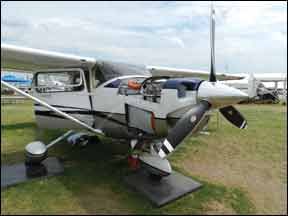If SMA’s Jet-A burning piston powerplant looked promising when it appeared in 1998, it soon became the little engine that couldn’t. A decade ago, interest in aerodiesels was lukewarm at best and SMA found no major OEM takers, either. But at AirVenture 2012 this year, Cessna’s announcement to offer the SMA diesel in the Skylane might finally get the SR305 out of the starting blocks.
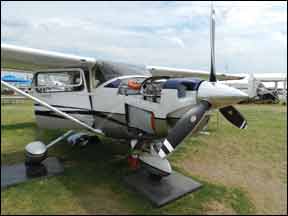
We knew Cessna was interested in diesel engines because two years ago, then-CEO Jack Pelton told us the company had tested all of the above-ground diesels, which included the Thielert and SMA offerings and we’re sure they at least examined the Austro and Delta-Hawk. Although it seems obvious why Cessna picked the SMA in hindsight, it wasn’t always that way.
With no small fanfare in 2007, Cessna announced it would offer the 172 Skyhawk with the Thielert 2.0 Centurion, the predecessor of which, the 1.7 Centurion, found surprisingly good sales numbers in the Diamond DA42 twin and DA40 single. But in a bullet-dodging bit of good luck worthy of a Roadrunner cartoon, Cessna got wind of Thielert’s technical troubles with the engines months before Thielert went into bankruptcy in the spring of 2008. Cessna suspended the diesel program, evidently awaiting further developments.
What Changed?
What moved Cessna off the dime and back into an active diesel program? At an AirVenture briefing, Cessna told assembled journalists that the market is asking for diesel engines, if not Cessnas with diesels specifically. Cessna’s Jeff Umscheid picked the most well-worn cliché—game changer—to describe the new 182 NXT Skylane. Although he didn’t say as much, Cessna was evidently waiting for the right engine and SMA—with an improved version, the SR305-230E—was the first to offer it.
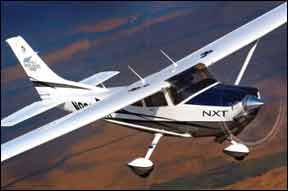
The Thielert Centurion line has too little power to be suitable for the 182 and the Austro AE300 has the same shortcomings. The long-awaited DeltaHawk, although light, simple and powerful is, well, still awaited. Certification remains over the horizon. Two years ago, Continental announced its own diesel program using the SMA SR305 as a technological start-off point, but like the DeltaHawk, it’s not certified yet.
Meanwhile, despite lackluster interest from the market, SMA forged ahead with significant improvements to the original SR305 to correct some of its shortcomings related to minor fueling and cooling issues and cold-weather intolerance. It also made changes in components to improve durability.
SMA 2.0
At AirVenture, SMA seems to have inverted its emphasis to highlight its parent company, SAFRAN, as a provider of the engine. SAFRAN is an aerospace giant, with products in the commercial transport, military and spaceflight segments. Notable at Oshkosh was that SAFRAN’s nameplate was the dominant element in the signage and the promotional material. We think this is an intentional repositioning.
As for the base engine itself, the SR305 is a four-cylinder, four-cycle turbocharged diesel capable of burning various iterations of Jet A. Unlike the Austro and Thielert engines, which are automotive-derived, the SR305 was purpose-designed as an aircraft engine, thus its basic planform is similar to a conventional Lycoming or Continental. It has a split case with bolt-on cylinders, two valves per cylinder and a pushrod valve train. The heads are easily separable from the cylinders.
Compared to the Thielert and Austro offerings, the SMA is old school, with a Bosch variable-rack fuel injection system rather than the state-of-the-art high-pressure common rail systems found in typical automotive engines from which the Austro and Thielert derive.
Where those engines use electronic injectors capable of precisely metered and shaped fuel charges, the Bosch system has an engine-driven pump assembly with a sliding piston/barrel arrangement to meter the fuel mechanically through individual lines to each cylinder injector. It runs at less than half the pressure of common rail systems. But SMA’s fueling gets a little help from an add-on electronic engine control that drives the rack more accurately through an electric motor.
LIMITED AUTHORITY
On the plus side, the Bosch system is a proven, reliable performer, having first appeared in the automotive markets before World War II and it was in wide use by Mercedes-Benz during the 1950s and 1960s. On the other hand, compared to electronically controlled common-rail systems by Daimler-Benz, the Bosch design’s ability to finesse fueling is limited. Electronically controlled fueling is the primary reason why modern diesels have vastly improved fuel specifics, power output and lower emissions compared to diesels of even 10 years ago.
Nonetheless, Cessna and SMA claim the SR305-230 is up to 42 percent more efficient than the gasoline engine it will replace in the Skylane and that its operational costs are more than 50 percent lower.
At 455 pounds, it also has the best specific power of the certified diesels, although it’s not the lightest in absolute terms. That distinction belongs to Thielert. The SMA SR305-230E has a specific power of .5 HP/lb, compared to .41 HP/lb for the Austro AE300 and .47 HP/lb for the latest version of the Thielert Centurion 2.0.
Revised Design
With only about 40 engines in the field—most in STC conversions of the Cessna 182—SMA has somewhat limited field experience with the SR305, considering the engine has been out there for nearly 15 years. Although this experience revealed few significant structural shortcomings with the design, the so-called Dash-1 version of the SR305 was hardly flawless.
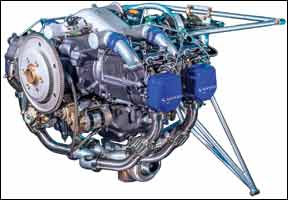
Despite being turbocharged, it had boost limitations that hobbled its performance above 12,000 feet. It also had cooling issues and, as is the case with all compression-ignition engines, at lower power and boost settings, it was susceptible to flame-outs. This required a minimum power setting on final approach that some operators complained about.
At AirVenture, SMA’s Nicolas Mesnage, the company’s chief of development, reviewed in detail for us some the changes made in the SR305-230E or “enhanced” engine, the version that Cessna will use in the 182. Improvements to the engine are best thought of as a constellation of minor changes that SMA says will have significant impact.
The most important may be a new, SMA-designed turbocharger with a higher compression ratio than the previous model had and this, along with some tweaking of the fueling, addresses the SR305’s previous wheeziness at high altitude. The Dash 1 engine’s output fell off sharply above 12,500 feet due to boost issues, but with the new turbocharger, the engine can maintain 75 percent power up to 20,000 feet, Mesnage told us during an interview at AirVenture.
Unlike the typical turbocharged gasoline engine, the SR305 turbo system is “free floating,” meaning it doesn’t have a traditional hydraulically controlled wastegate. What keeps it from bootstrapping, we asked? Mesnage explained that the turbo is designed to “self adapt” and that because of its high boost requirements—up to 94 inches—the engine can’t be overboosted.
The new turbo, induction and fueling solves the engine’s flameout problems, too. SMA addressed this in the Dash 1 by restricting the minimum power setting to something above idle. This proved to be somewhat of a flyability issue, especially on a high or too-fast approach. The enhanced engine can be idled and it also has better air restart capability. (When Cirrus flew the original Dash 1, it complained about problems with air restarts.)
Cirrus also had issues with cold weather starts and SMA has addressed this by adding a set of automatic glow plugs, one per cylinder. The plugs are used at temperatures of 20 degrees C or lower and heat the cylinder locally for 20 to 30 seconds before fuel is injected. The glow plug cycle is automatically controlled and shuts itself off.
Although SMA never fielded a large number of the Dash 1 engines, it did learn enough to redesign a number of components based on that experience. For example, the crankcase is beefier because some minor cracking was noted in harsh operating envelopes. Mesnage said SMA expects the crankcase to endure through three overhaul cycles, something that should reduce ownership costs if it proves true.
Furthermore, the cylinders have been redesigned to improve cooling. The original engine was air/oil cooled and so is the enhanced version. The oil is used to cool cylinder hot spots, so there’s less need to get the baffling just right and fewer worries if it degrades in service. Along with improved cylinders, the new engine also has reworked pistons, which Mesnage said are also intended to last through three overhaul cycles.
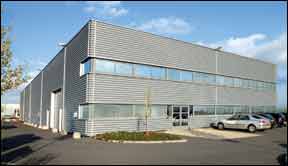
SINGLE LEVER
Where the Thielert and Austro diesels rely on electronically controlled common-rail fueling, the SMA has a lower pressure system with plunger or piston-type rack control. It does have electronic aiding in the form of a linear variable displacement transducer—essentially a linear electric motor—that precisely adjusts the fuel rack according to the pilot’s commanded throttle position.
Cessna’s Charlie Wilcox told us that this setup can be thought of as “sort of” throttle by wire, since it uses data from a dual-channel electronic engine controller to optimize fueling efficiency for the commanded power. Because the Bosch pump remains a purely mechanical system, manual reversion—invoked via a red lever on the throttle quadrant—gives the pilot direct control of the fuel rack via a traditional throttle cable.
Because of their vigorous torque pulses, diesels are hard on props and none of the current offerings are able to swing metal props. All have composite or wood-composite props, as does the SMA, either a Hartzell or MT three-blade design. What the SMA engine doesn’t have is a gearbox. It’s a direct-drive design with fixed governing to limit it to 2200 RPM. (It’s a single-lever system; no manual prop control.) SMA managed this by sorting out the inertial components—crankshaft and connecting rods—and adjusting the fuel timing to minimize torque spikes. So, no prop or crankshaft damping at all?
“I don’t like the word damping, because damping means losing energy,” Nicolas Mesnage told us. “We try to avoid any damping inside the system. We arrange the inertia distribution to make it smoother.”
One surprise revealed at AirVenture, in addition to the airplane itself, is that Lycoming will support the SR305 through its established service channels. That will eventually include overhauls.
“The engine is quite similar to the Lycoming engines for disassembly and inspection. There’s nothing really different. That was a good surprise for the team from Lycoming when they were training,” said Mesnage.
Performance, Installation
We got a look at the SR305 installation in the 182 at AirVenture and although we couldn’t compare it directly to the 182 SMA STC conversion we reported on in the January 2010 issue, there appear to be similarities.
At first glance, Cessna seems to have done a better job with the cowlings. The SR305 needs plenty of air for cooling and for breathing and Cessna provides it with generous scoops in the lower cowling that appear we’ll integrated. If these add cooling or induction drag, Cessna’s Charlie Wilcox told us it doesn’t appear to ding performance.
On seven less horsepower than the Lycoming TIO-540-AK1A it replaces, the SMA engine delivers essentially identical performance, according to Cessna’s initial test data. Specifically, Wilcox—who’s lead test pilot in the certification project—says the SR305 delivers about 161 knots true on 12 to 12.5 GPH at 10,000 to 14,000 feet at 90 percent power. On paper, that’s comparable to if not faster than the avgas-fueled T182T whose POH claims about 136 knots on 12.1 GPH at 65 percent power. Presumably, if the SR305 were throttled back to a like power output, its fuel consumption would be 9 or 10 GPH, but we don’t yet have reliable numbers on this. We’ll see when we fly it.
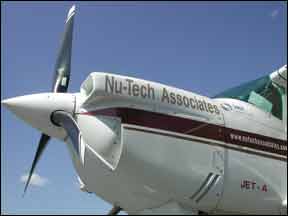
At its maximum altitude, the SR305 can still deliver 75 percent power for 154 to 155 knots on 9 GPH compared to 147 knots on 12.1 GPH for the gasoline engine. Note that these are preliminary data; we haven’t flown the airplane nor seen the final POH claims.
In its promotional material, SMA claims a brake specific fuel consumption of .365/pounds/HP/hour. That’s better than the .45 to .46 of the Lycoming gasoline engine and if it’s accurate, it’s comparable to the .36 to .38 of the Austro and Thielert engines. We’re somewhat skeptical of the SMA claims because Austro and Thielert get their numbers with more sophisticated, FADEC-controlled fueling.
But even if the fuel specifics are that low, the SR305 does offer weight and payload advantages. The diesel version will carry the same 87 gallons that the gasoline version does but because it’s more economical, it can tanker less fuel for the equivalent range, improving the payload.
Overall, the SR305 installation is about 15 pounds heavier than the gasoline version, but because the prop arc is at the same point, there’s no hit on center of gravity. Since it’s a four-cylinder, the SMA is shorter than the Lycoming, so there’s plenty of room for wrenching between the back of the engine and the firewall, although there’s not much back there to service, other than the fuel rack.
Conclusion
At $515,000, the Cessna 182 NXT will sell for a 16 percent premium over the $443,000 T182T it will replace. We’re not sure how much of the $72,000 price Delta is assigned to the engine, but some must be, confirming Lycoming’s claim that diesels are more expensive to produce than proven gasoline engines. That’s one reason Lycoming has demurred on developing its own diesel.
The payback is life cycle and operating costs. Two Aviation Consumer investigations of STC conversions of the SMA diesel revealed that long-term cost of operation of the SR305 is measurably less than the equivalent gasoline engine, if the diesel makes its TBO numbers without onerous mid-stream maintenance. In our view, there simply aren’t enough fleet hours on the SMA engines to prove this beyond question, but what data do exist look promising to us. We’re reserving final judgment for now.
If Jet A is the future fuel—and at this juncture, it sure looks as though it will be—Cessna’s 182 NXT may be timed perfectly to ignite if not a torrent of sales, a modest trend in a positive direction. Although the economy of diesels is attractive, what the trend is really all about is fuel availability. Jet A can be found almost anywhere—avgas can’t.
We’ve heard it claimed that diesel aircraft sales wouldn’t take off until Cessna got into the game and now that it has, we’ll soon see if the claim has merit.

